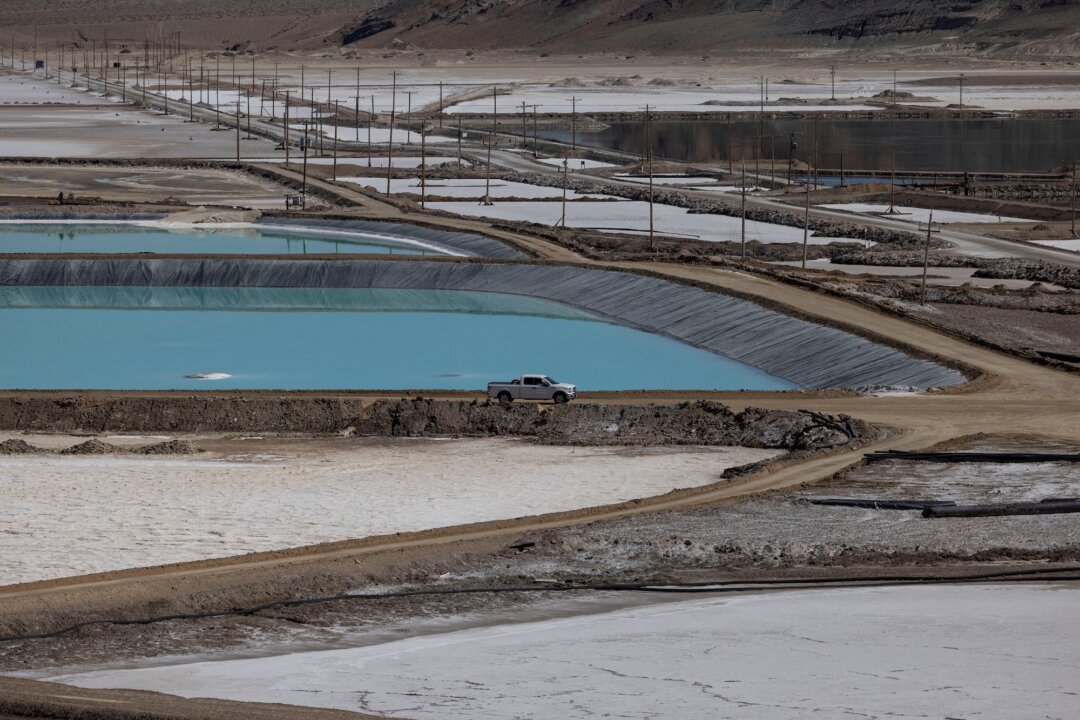The initiative aims to boost domestic production of critical minerals and reduce dependence on China by expediting reviews for key mining projects.
The Trump administration on Friday announced a major step to accelerate domestic critical mineral production by fast-tracking permitting for 10 mining projects under the federal FAST-41 infrastructure initiative.
The move, jointly announced on April 18 by the Department of the Interior and the Federal Permitting Improvement Steering Council (Permitting Council), follows President Donald Trump’s recent executive order directing agencies to immediately facilitate the development of U.S. mineral resources that are vital to national security and economic resilience.
“Our national and economic security are now acutely threatened by our reliance upon hostile foreign powers’ mineral production,” Trump wrote in the March 20 order. “It is imperative for our national security that the United States take immediate action to facilitate domestic mineral production to the maximum possible extent.”
The initial slate of projects includes proposed operations in lithium, copper, phosphate, potash, and metallurgical coal—resources viewed as essential to defense technologies, battery production, and high-tech manufacturing.
Officials say the selected projects, now listed on a federal permitting dashboard, will benefit from more predictable timelines and streamlined environmental review processes.
Among those receiving FAST-41 designation are Rio Tinto’s Resolution Copper Project in Arizona, Perpetua Resources’ Stibnite Gold Project in Idaho, Albemarle’s Silver Peak Lithium Mine expansion in Nevada, and Standard Lithium’s South West Arkansas brine project.
“This is the first use of the Permitting Council’s transparency authority,” Manisha Patel, acting executive director at the Permitting Council, said in a statement. “The Federal Permitting Dashboard is a vital tool in enhancing interagency coordination and efficient decision making and will play an invaluable role in ensuring that these projects receive the most efficient review and authorization process possible.”
The visibility associated with tracking the projects on the dashboard will increase accountability across federal agencies and reduce permitting delays that have historically stretched up to a decade, Interior Department officials said.
“For too long, duplicative processes and regulatory paralysis have delayed the development of the minerals America needs to power everything from national defense systems to smartphones,” Adam Suess, acting assistant secretary for land and minerals management, said in a statement.
The move comes as the United States seeks to reduce reliance on mineral imports from adversarial nations, especially China. According to the Interior Department, the United States has significant untapped reserves but faces permitting timelines that lag behind countries like Canada and Australia—creating what officials describe as a competitive disadvantage.
While FAST-41 does not change environmental regulations or public comment rules, it clarifies timelines and reduces review delays, seeking to help agencies work together more effectively. The program, which was established under the 2015 Fixing America’s Surface Transportation Act, aims to improve federal coordination and decision-making for major infrastructure projects.
There was no immediate opposition to Friday’s joint announcement by environmental groups.
Earthjustice criticized Trump’s March 20 order on boosting domestic mining and processing of critical minerals.
“Mining operations on public lands already operate under a sweetheart deal, and today’s order will make it even easier for mines to sidestep environmental reviews and harm vulnerable communities, lands, and critical water sources,” Earthjustice senior legislative representative Blaine Miller-McFeeley said in a statement after the order was signed.
Miller-McFeeley added that truly secure supply chains require legally binding environmental safeguards and community consultation.

